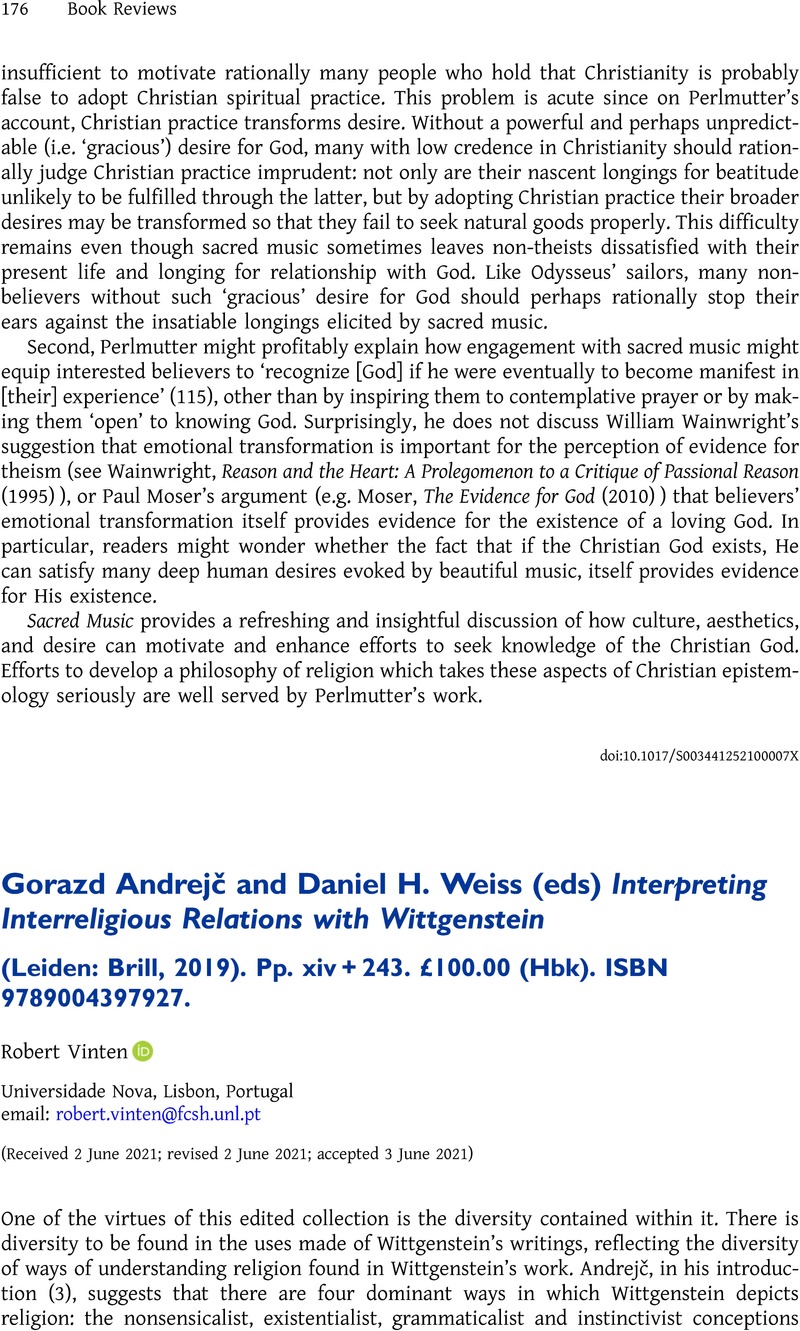No CrossRef data available.
Article contents
Gorazd Andrejč and Daniel H. Weiss (eds) Interpreting Interreligious Relations with Wittgenstein (Leiden: Brill, 2019). Pp. xiv + 243. £100.00 (Hbk). ISBN 9789004397927.
Review products
Gorazd Andrejč and Daniel H. Weiss (eds) Interpreting Interreligious Relations with Wittgenstein (Leiden: Brill, 2019). Pp. xiv + 243. £100.00 (Hbk). ISBN 9789004397927.
Published online by Cambridge University Press: 01 July 2021
Abstract
An abstract is not available for this content so a preview has been provided. Please use the Get access link above for information on how to access this content.

- Type
- Book Review
- Information
- Copyright
- Copyright © The Author(s), 2021. Published by Cambridge University Press



